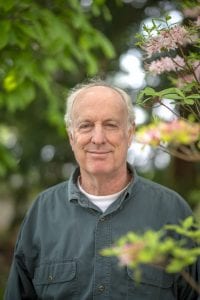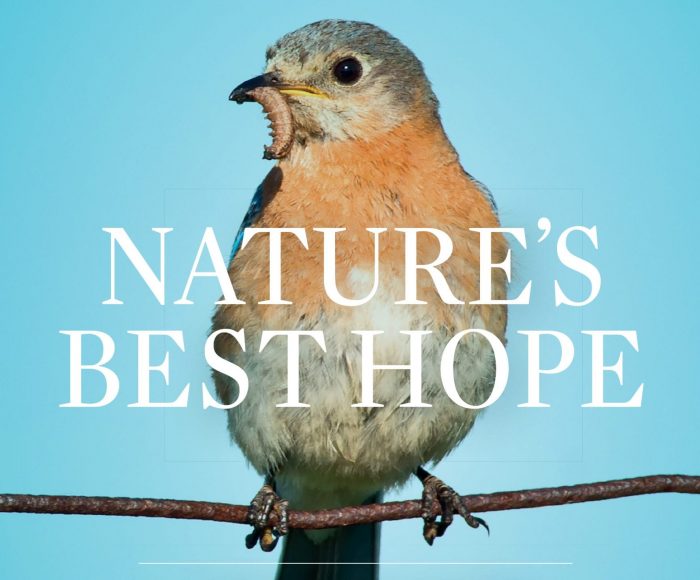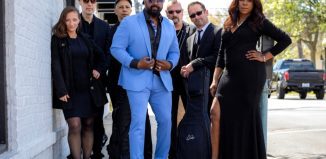Book Review: Nature’s Best Hope
Reviewed by John L. Turner

Authors have differing goals for writing. For some, the motivation is to entertain, for other’s it’s to illuminate some slice of life, and for others still it’s to explore some fascinating historical event. In rare cases, though, the author writes with the not-so-modest goal of changing the world by presenting a new and novel way of looking at things, the result being a change to a person’s perspective on an issue, concept or their set of values.
Changing the world, or at least a part of it, by shifting our collective mindset is Doug Tallamy’s goal in his highly insightful book Nature’s Best Hope. The target of this change? The front and backyards of suburbia, dominated as they are by grass lawns and non-native shrubs. As Tallamy makes clear our yards are a virtual dead zone, biologically speaking, requiring vast amounts of water and chemicals and which provides little to no food or shelter for wildlife, large and small.
In its place, Tallamy sees a suburbia vibrantly alive with wildlife — butterflies and moths, pollinating bees, and abundant birds — all sustained by widespread plantings of native, life-sustaining plant species — white oaks, willows, and black cherry trees; elderberry, arrowwood and spicebush shrubs interspersed among beds of wildflowers including goldenrods (not the producers of hay fever!), asters, evening primrose, blazing stars, and milkweeds. He sees residential landscape design incorporating new values beyond just aesthetics to include the needs of the local ecology by providing species that help maintain, and to a large degree enhance, local food webs.
What does he call this interconnected webs of land with interconnected native plant and animal species flourishing within? Homegrown National Park, a place every bit as diverse as any national park existing today and “Nature’s Best Hope” for restoring highly important ecological relationships.

As Tallamy makes clear, the spread of “sterile suburbia,” dominated by turf grass and exotic trees, shrubs, and wildflowers, is not a small problem. Collectively, lawns take up approximately forty million acres of land in the United States, equivalent to the combined size of the states of New York and Massachusetts. And it is growing daily.
And as Tallamy further makes clear, this growth has come at a high ecological cost. Forests and fields, filled with native plants that sustain caterpillars, bumblebees, squirrels, and Scarlet Tanagers, are replaced with exotic and sterile plants — Callery Pears, Arborvitae, hostas, and English Ivy, to name but a few. These plants and other exotics are fed upon by very few species, causing food webs to fall apart, a trend that portends an ominous future.
Here’s but one example — butterfly and moth caterpillars are the major source of food that songbirds feed their young — and oak species sustain 557 caterpillar species! If there are oaks, and other native trees, then the local food web is intact; remove and replace them and other native plants with non-natives and it unravels — insects decline followed by birds and mammals.
And this unraveling, happening quietly before our eyes, means that Tallamy’s idea isn’t just an interesting one — it is vital to our survival! Birds are not the only group of animals dependent on insects for their survival — we humans depend upon insects too. If we were to do away with all insects, human society would soon collapse and humanity would simply not survive long-term for there would be no replacement agent to pollinate the nearly 90% of all plants that they currently depend upon insects for.
Many insects are in trouble, a trend which scientists have labeled the “insect apocalypse.” Several North American bumblebees have already gone extinct and 25% of our other native bumblebees risk extinction. Many other of the continent’s 4,000 bee species are in trouble too, not to mention countless moths, butterflies, and beetles. Even the workhorse European honey bee is in trouble.
Tallamy is a fine writer with an interesting and clear style and he presents subjects and concepts in logical sequence. Color photographs of numerous plants and butterflies (and their famous larvae-caterpillars) fill the book and there’s an informative question and answer section in the back of the book. Also, an extensive bibliography is available if the reader is interested in digging deeper into some concept covered in the book.
And the most important chapter in the book? Chapter 11, entitled “What Each of Us Can Do.” The chapter includes a bunch of common sense ideas: shrink the size of your lawn; remove invasive species; plant native plants that are ecologically important like the aforementioned oaks and goldenrods and be generous with these plantings; talk to, and team up, with your neighbor to coordinate plantings; install bee hotels; place covers over sunken window wells that can serve as death traps for small mammals and amphibians; use motion-sensing security lights that only go on when needed (security lights that stay on all the time can kill hundreds if not thousands of moths attracted to the light); and do not spray or fertilize — native plants don’t need it.
Each of us can do some or all of these things. If we do any of them, we are helping to expand Homegrown National Park!
Released in February through Timber Press, Nature’s Best Hope is available online at www.timberpress.com, www.amazon.com and www.barnesandnoble.com. For more information on the author, visit www.bringingnaturehome.net.







